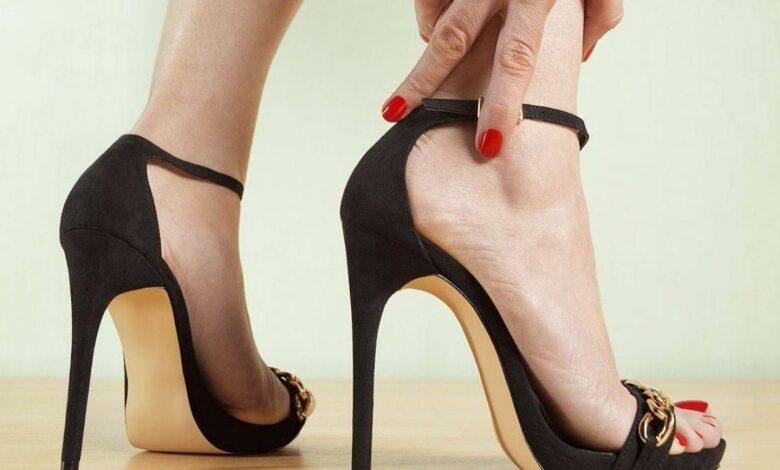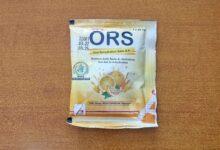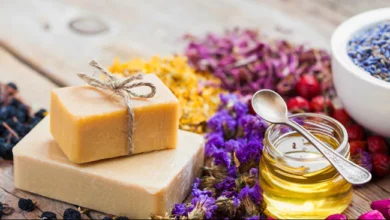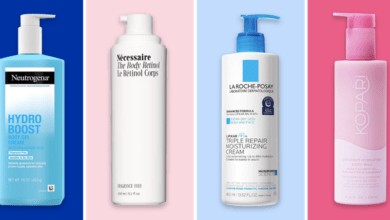
10 Disadvantages of Wearing Heels
10 Disadvantages of Wearing Heels – Heels are a coveted wardrobe staple for many women seeking to look more polished and elongate their frame. However, despite their aesthetic appeal, wearing high heels – especially frequently and for long periods – can cause numerous downsides for foot, ankle, leg, and spinal health. In this comprehensive article, we will explore the top 10 disadvantages of wearing heels in-depth.10 Disadvantages of Wearing Heels
The 10 Disadvantages of Wearing Heels:

1. Crooked Feet
One major risk of prolonged high heel wear is the development of crooked, misshapen feet. Heels slant the foot downward at an unnatural angle, directing all body weight onto the toes instead of being evenly distributed. Over years of wear, the delicate metatarsal bones in the feet can slowly bend and morph to adapt this misalignment.
👉 Relocate to Canada Today!
Live, Study and Work in Canada. No Payment is Required! Hurry Now click here to Apply >> Immigrate to CanadaSpecifically, heels force the foot bones closest to the toes – the metatarsals – into a permanently downward sloping position. This causes a pronounced arching of the instep that remains even without heels on. The metatarsals also drift sideways toward the big toe, leading to forefoot valgus, or splaying of the front of the foot.
Furthermore, heels often taper to a narrow point that crowds toes together. This regular compression pushes the big toe toward the second, eventually overlapping or overriding it to form a bunion. Bunions cause a bump on the base of the big toe that grows larger and more painful over time.JAMB portal
To avoid crooked, misshapen feet, doctors strongly recommend limiting heel height to 1 inch or less. Shoes with roomy toe boxes allow toes to rest in proper alignment without bunching. Custom orthotics or toe spacers can help realign and spread front foot bones. However, effects are not always fully reversible once crooked feet develop.
Read Also: Top 15 Trendy Wedge Heels 2023
2. Weakens Ligaments
Another downside of prolonged heel use is weakening of the ligaments and tendons that support the foot. Heels overload the forefoot while the heel is lifted, forcing the foot to bear full body weight in an unnatural position. This strains the plantar fascia – connective tissue in the sole – as well as the Achilles tendon at the back of the heel.
Over time, these tissues elongate and lose elasticity to compensate for consistent stretching in heels. However, this leaves them substantially weaker. Activities like running or jumping without proper support can then overextend the lax tendons, resulting in tears or ruptures. Plantar fasciitis, an inflammation of the plantar fascia, also becomes more likely.
Those who wear stilettos frequently from a young age are particularly prone to lifelong ligament laxity. However, keeping heels under two inches, regular calf stretching, and orthotic inserts can help strengthen connective foot tissues. Still, damage may be irreversible if heels are worn excessively.
3. Knee Pain
In addition to foot issues, regular high heel wearers often develop knee pain and joint damage. Heels alter the normal angle between the foot, shin and thigh, hyperextending the knee. This places more pressure on the underside of the knee cap, straining tissues and cartilage. Prolonged periods in heels fatigues the knee extensor muscles as they work harder to stabilize the exaggerated arch of the lower leg.
👉 Relocate to Canada Today!
Live, Study and Work in Canada. No Payment is Required! Hurry Now click here to Apply >> Immigrate to CanadaOver time, compressive force on the knee joints wears away protective cartilage and lubricating synovial fluid. As cartilage thins, inflammation and arthritis emerge. Aching, swollen knees become increasingly common. Walking and standing are painful. Those with pre-existing knee conditions like chondromalacia or osteoarthritis suffer further damage in heels.
Doctors strongly discourage prolonged heel use for those with knee pain or injury history. Shoes with a platform, wedge or block heel are preferable to stilettos for distributing weight. Gel inserts, knee braces, and quad/hamstring strengthening provide additional joint support. However, heels over 1 inch should be minimized.
Read Also: Top 15 Polo Fashion Trends in Nigeria
4. Lower Back Pain
The posture needed to balance in heels also takes a toll on spinal health. To keep from pitching forward, the lower back must overarch while the shoulders hunch inward. This shifts the pelvis forward, flattening the lumbar curve and tensing the paraspinal muscles. Prolonged heel wear chronically strains the vertebrae, intervertebral discs, nerves, and paraspinal muscles in the lower back.Information guide Nigeria
Specifically, the lumbar vertebrae press together abnormally, raising the risk for herniated discs over time. Nerves may become compressed or pinch. Facet joints degenerate from constant hyperextension, leading to stenotic, immobile sections in the lower spine.
Lower back muscle fatigue, spasms, and pain become increasingly common. Those with pre-existing back conditions like degenerative disc disease or scoliosis suffer more symptoms in heels as spinal curves worsen. Surgery may ultimately be required.
To minimize damage, heels over 2 inches should be avoided. Proper posture, core exercises, orthotic inserts and physical therapy help strengthen the back. However, chronic lower back pain and nerve issues still often result from excessive heel wear.
5. Sore Calves
Additionally, regularly wearing heels frequently leads to calf soreness, cramps and fatigue. Heels shorten the Achilles tendon and calf muscles, forcing them to remain perpetually contracted without release. This causes uncomfortable tightness and cramping, especially during exercise or while switching to flat shoes.
Over time, shortened calf muscles lose flexibility and shock absorption. This increases strain on the knees and heels each step. Plantar fasciitis can emerge as the instep overworks to compensate. Those with high arched feet are most prone to heel-caused calf pain, as the arch becomes exaggerated.
Stretching before and after heel use helps lengthen calves. Calf compression sleeves improve circulation and support. However, calf pain and stiffness inevitably results from daily use. Wearing heels minimally, no more than 1-2 days per week, allows muscles adequate recovery time.Romantic love message
6. Hyperextension In Toes
Heels also commonly cause toe joint pain and deformities. The inclined sole forces the foot into an unnaturally arched position, hyperextending the metatarsophalangeal joints where the toes meet the forefoot. Over years, these joints stiffen in an impossibly flexed position even without heels.
Big toes are often pushed upward from friction against shoes, forming hammertoes. Walking requires rebalancing weight to the smaller toes, which can then also contract into malformations like claw or mallet toe. Crooked, overlapping, painful toes become permanent.
Wider toe boxes allow proper joint positioning to minimize hyperextension. Toe spacers straighten bent digits. However, osteoarthritis often still develops in metatarsals and toe joints from chronic high heel wear. This causes permanent, debilitating pain and loss of mobility. Most cases require surgery to realign or fuse affected joints.
Read Also: 15 Best Closed-Toe Heels 2023
7. Foot Pain
In conjunction with toe issues, regularly wearing high heels frequently leads to generalized foot pain. The inclined angle forces body weight unnaturally forward onto the ball of the foot and toe joints. The metatarsals endure excessive pressure with each step, as do the knee joints.
The height of most heels also narrows the base of support for balance, forcing the wearer to teeter largely on the forefoot. Combined with pinched toes, this significantly reduces stability and shock absorption. Intense pounding causes inflammation and pain.
Additionally, the rigid sole of heels prevents natural flexing of foot muscles and spreading of impact. Metatarsalgia, or pain and tenderness in the ball of the foot, often results from repeated stress. Foot muscles eventually weaken and fatigue easily without proper conditioning.
Doctors recommend heels no higher than 1 inch to minimize forefoot pressure. Orthotic inserts with arch support transfer some weight off the front of the foot. Gel pads cushion painful areas. However, metatarsal and toe pain often persists with chronic high heel wear.Good morning My Love Message
8. Ankle Sprains
Heels also make wearers far more prone to ankle sprains and instability. The inclination angles feet improperly while raising the heel. This forces ankles into greater plantarflexion than neutral shoes, putting them near the maximal dorsiflexion range of motion. Points of ligament attachment are more stressed and prone to tears.
The height of most heels also narrows the base of support substantially compared to athletic shoes. Less surface area increases unsteadiness and wobbling on uneven terrain. Sudden missteps easily cause violent twisting and inversion of the ankle joint, spraining ligaments.
One study found heels over 2 inches increase ankle sprain likelihood 2.78 times compared to flats. The risk climbs higher as the heel height rises over 3 inches. Stilettos are particularly hazardous due to their staggering incline.
Ankle braces, balance training, and high-top shoes provide some added support in heels. However, sprains and instability remain common with regular wear. The safest measure is reserving heels only for special occasions, not daily use.
Read Also: Top 15 Premium T-Shirt Brands Nigeria
9. Awkward Spinal Curve
Heels also promote awkward curving of the spine that can become permanent over time. The pelvis tilts forward in heels, causing increased arch in the lower back and hyperextension of the buttocks. The shoulders hunch inward to counterbalance this, compressing the upper back.
Regularly contorting the spine into this posture trains the vertebrae and discs to adapt accordingly. Eventually, wearers lose their natural upright alignment. The ability to stand fully straight with pelvis in neutral and chin parallel to the floor diminishes, replaced by a perpetually tilted pelvis and arched lower back even without heels.
Rehabilitative therapy is often necessary to rebuild strength in postural muscles that become overstretched and weakened from heel wear. However, avoiding very high heels from a young age is ideal to maintain proper spinal curves long-term.
10. Constricts Blood Vessels
Lastly, the effects of heels on circulation can have serious health consequences. The inclined angle and tapered shape constricts blood vessels and pools blood in the feet and legs rather than returning it effectively to the heart. Heels pressing into the top of the foot also may directly compress surface veins.
Peripheral vascular conditions like varicose veins, spider veins, ankle swelling, numbness/tingling, and leg fatigue become more prominent. Those with existing issues like deep vein thrombosis or lymphedema suffer further. Poor circulation also slows wound healing.NYSC Portal
Stretching calf muscles regularly promotes better blood return between wears. Compression stockings also help circulation. However, symptoms inevitably worsen from prolonged high heel use. Positive effects reverse when switching permanently to flat shoes.
Read Also: 15 Biggest Leather Retail Markets in Nigeria
Conclusion
In summary, while visually appealing, regularly wearing high heels can inflict substantial damage to the complex anatomical structures of the foot, legs and spine. Short-term use may cause temporary soreness, but wearing heels frequently and for long hours commonly causes chronic pain, gait abnormalities, nerve issues, and lifelong deformities over time.
To minimize negative impacts, the American Orthopaedic Foot & Ankle Society recommends high heels be no more than 2 inches in height and reserved only for special occasions. Shoes must fit properly without pinching or rubbing. Taking regular stretch breaks and building leg and core strength helps offset muscle imbalances. However, flat shoes are best for everyday wear and physical activities.
With some caution, occasional heel use likely poses little risk for most healthy adults. However, daily wear often leads to discomfort and mobility limitations that prove very difficult to reverse. When weighed against potential orthopedic damage, the styling benefits carry significantly less importance for long-term foot and joint health. Ultimately, prevention is ideal to avoid permanent damage.
Check JAMB Result
Check and Confirm: How much is Dollar to Naira






